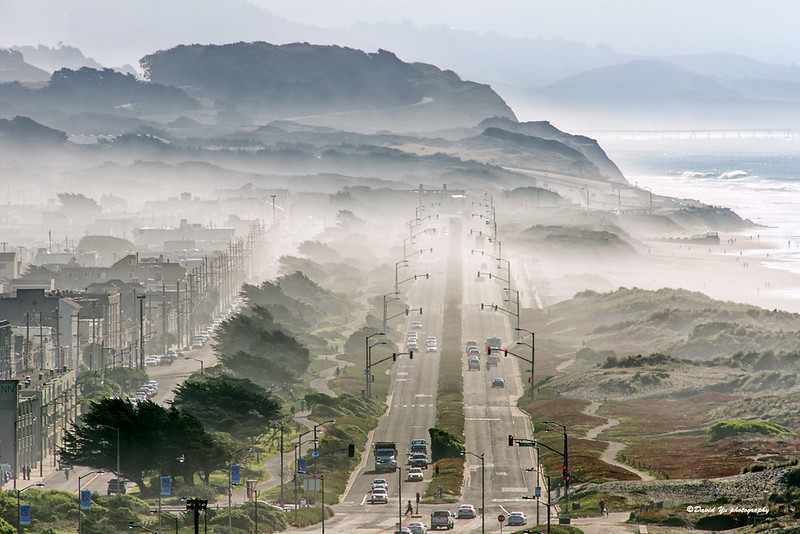National links: Tech elites look to build a new city outside of San Francisco

A view of San Francisco, California by David Yu licensed under Creative Commons.
Silicon Valley elites make moves to create a new city outside of the Bay Area. How subterranean dwellings in Australia may provide a glimpse into climate resilience. New York City speed camera enforcement shows promise of changing driver behavior.
Land for a new city: A who’s who of Silicon Valley heavyweights has purchased almost $1 billion worth of land near Travis Air Force Base between Sacramento and the Bay Area to build a new city. For four years, a group called Flannery Associates has been buying up farmland at above-market rate prices. But incorporating into a city would require a vote in Sonoma County and the group has already upset local politicians and residents. (Karen Breslau, Tom Giles | Fortune via Bloomberg)
Australian town where people live underground: Coober Pedy, an Australian opal mining town over 500 miles from the coast, is known for its sandstone and siltstone rock. The soft rock is easily excavated and the resulting caves are used for housing and entertainment to avoid the region’s hot summer days, which can regularly reach above 120 degrees Fahrenheit. Digging underground to avoid the heat is not new, but it also might be a glimpse into the future of a warming world. (Zaria Gorvett | BBC Future)
Drivers slow down with cameras: New York City rolled out speed camera enforcement 24 hours a day last year and has seen some positive results thus far. Speeding violations are down 30% on camera-enforcement corridors, and 80% of people who were issued their first speeding ticket haven’t been ticketed again. On some streets, speeding has been reduced by 96%. (David Meyer | Streetsblog NYC)
Don’t call it public housing: Montgomery County, Maryland, has been quietly building public housing by owning a large stake in private development and then using the “profits” as a way to lower rents for lower- and moderate-income residents. The Laureate, the first building financed with $100 million the county raised for such projects, is a way to try and address the multiple housing challenges facing the region, and the country as a whole, without calling it public housing. (Conor Dougherty | New York Times)
Rise of the eco-village: More and more people around the world want to live sustainably and to do so, they are joining eco-villages. 10,000 of these eco-villages exist globally and their numbers are increasing every year. They are also increasingly tied to a type of spirituality that connects people to each other and back to nature but often get mistaken for cults. As the negative impacts of climate change increase, more people might try to find their eco-village. (Mélissa Godin | Noema Magazine)
Quote of the Week
“We’ve known that the major cities in the United States, cities with more than 1 million people, have high levels of (nitrogen dioxide). It’s a product of combustion…that’s a concern. Nitrogen dioxide gets turned into ozone. It also can play a role in making fine particulate matter.”
NASA program scientist Barry Lefer in Houston Public Media discusses the preliminary findings from their new air pollution monitoring satellite.
This week on the podcast, we’re joined by Yvonne Yeung to talk about the Urban Land Institute’s recent report, Building 15 Minute Communities: A Leadership Guide.
